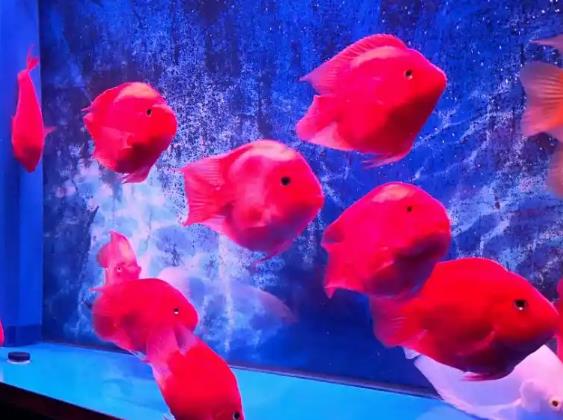The main reason why parrotfish nibble on aquatic plants is that they like to bite them, which causes the originally green and lush aquatic plants to turn yellow and withered. Parrotfish are omnivores. Although they don't actually eat aquatic plants, they will damage them by biting. In addition, parrotfish like to stir up the sand and dig holes, making a mess inside the fish tank. Moreover, they are strong and move quickly, easily pulling up the aquatic plants and ruining the scenery inside the tank.

Methods to prevent parrotfish from nibbling on aquatic plants include:
Provide hiding places: Place some hiding places or decorations in the fish tank, such as driftwood, rocks, etc. In this way, parrotfish may be more inclined to move around these objects instead of biting the aquatic plants.
Adjust the feed: Increase the amount of feed for parrotfish to ensure they have enough food, thereby reducing their motivation to bite the aquatic plants.
Clean regularly: Clean the fish tank regularly, promptly remove the damaged aquatic plants, keep the water quality clean, and reduce the destructive behavior of parrotfish.
Use anti-bite agents: There are some anti-bite agents available on the market that can be sprayed on the aquatic plants to form a protective film and prevent parrotfish from biting them.
Isolate for breeding: If conditions permit, parrotfish can be isolated and raised separately from other fish species to avoid destructive behavior caused by their interaction with other fish.
The requirements for the breeding environment of parrotfish include:
Water quality management: Parrotfish require sufficient water quality management and regular water changes.
Temperature control: Maintain a suitable water temperature, usually between 24 and 29 degrees Celsius.
Lighting requirements: As tropical fish, parrotfish need sufficient oxygen and lighting.
Food selection: Provide a variety of foods, including pellet feeds, freeze-dried insects, small fish slices, etc., to ensure a balanced nutrition.
